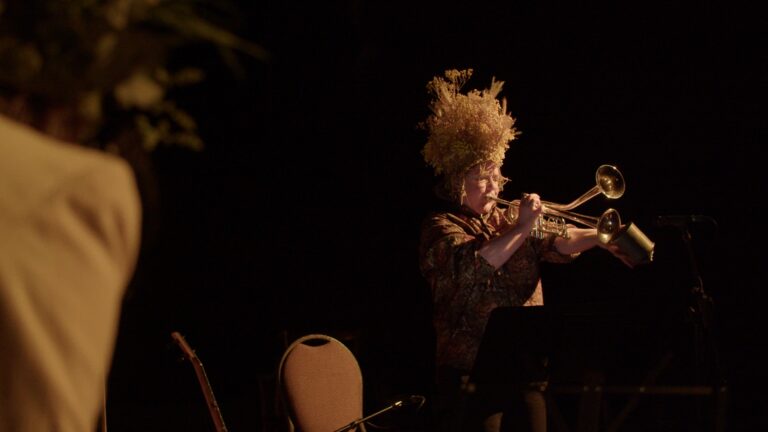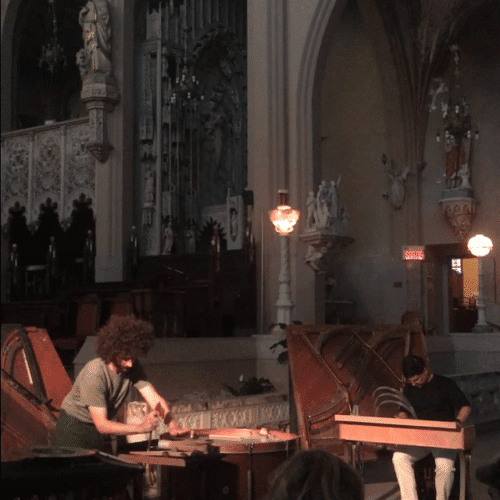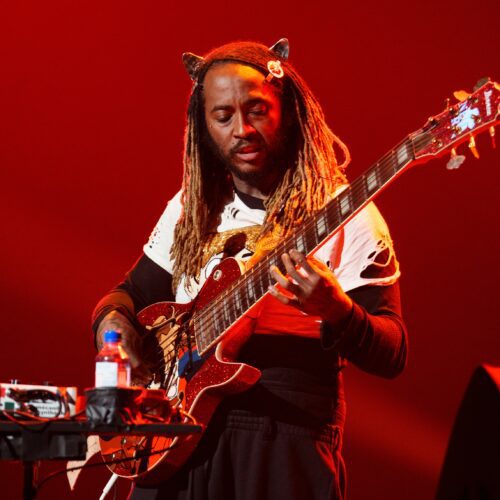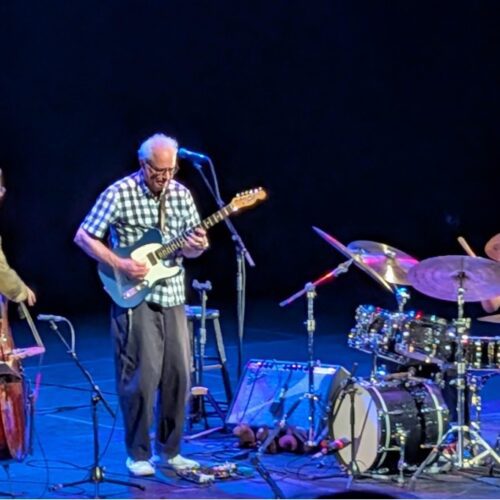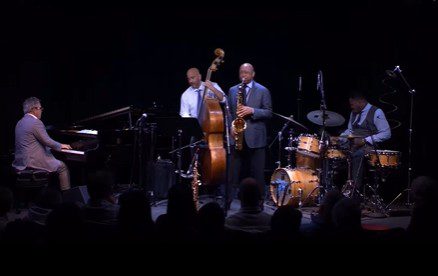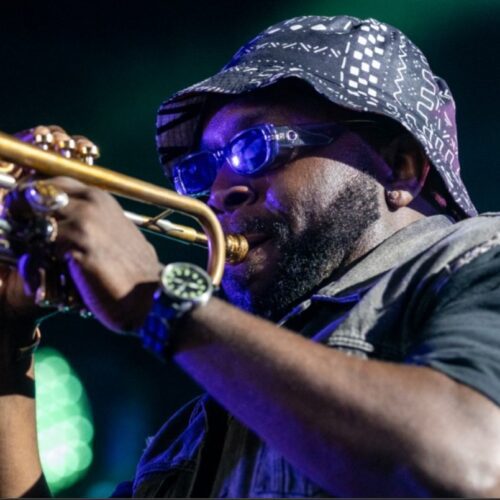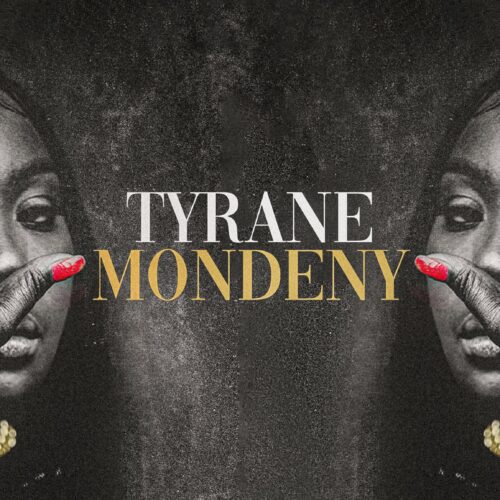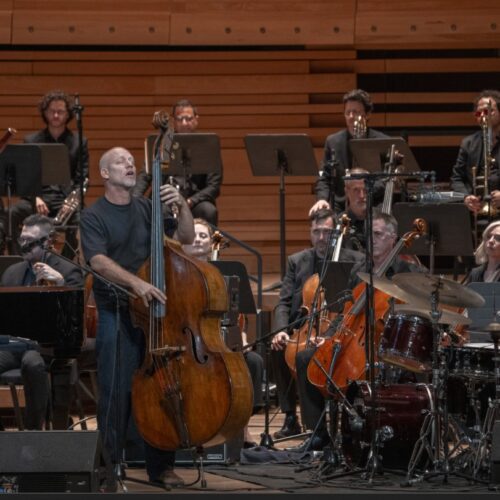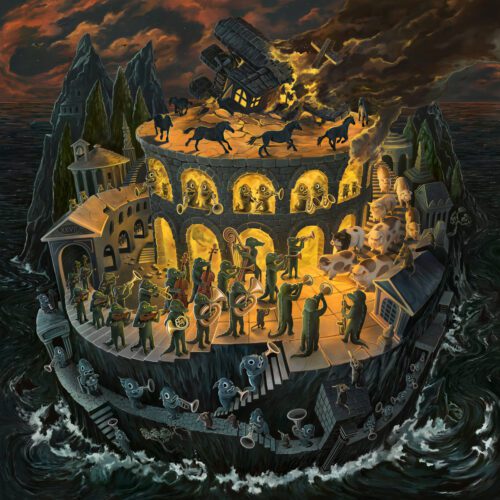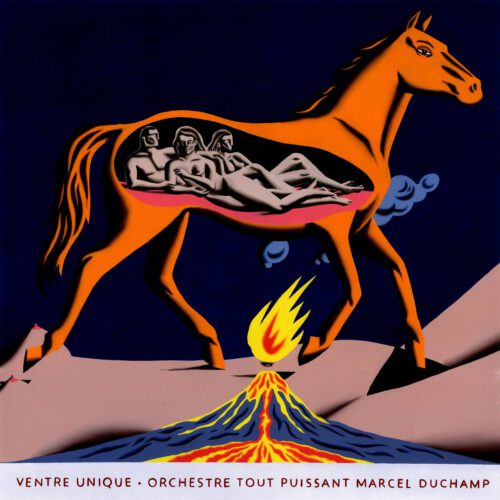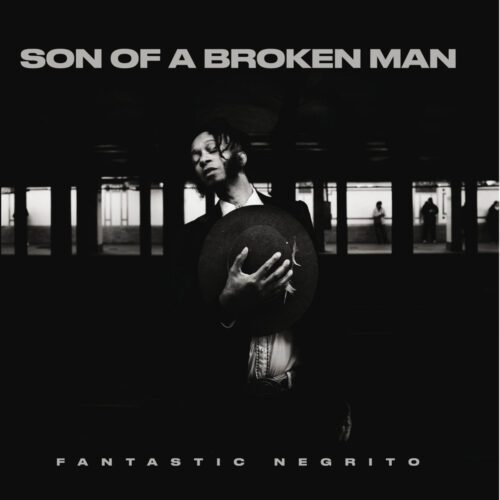The Sala Rossa was pretty well packed last night for the presentation of Innovations en concert’s final concert of the season. A concert with a Dadaist buffet and conceptual art allure. Four female composers, three from Montreal and one from Toronto, presented an equal number of new works conceived for acoustic instruments, digital processing and video projection. The only exception was Keiko Devaux’s introductory piece, performed in (almost) complete darkness. The piece, written for double-bell trumpet (yes, a trumpet with two outlets, one normal and straight, the other at an upward angle), was a very fine introduction. Devaux makes good use of the very rapid timbral contrasts that can be executed by this instrument. For example, one bell can be muted and the other unmuted, so that the performer can switch from a veiled to a brilliant sound in the space of a single note. No need to change instruments or take time to install the mute. The piece, entitled SADA (echo), evokes wide-open spaces struck by amply reverberated resonances, evoked as much by the instrumental writing as by the live digital manipulations. A beautiful introduction, imbued with a strange nobility but also a sense of panoramic grandeur, supported by the mostly consonant harmonies used by the composer, and beautifully rendered by soloist Amy Horvey.
The evening continued with a radically different proposal from Terri Hron, entitled Out Loud, a feminist opera for solo performer, live electronics and video, lasting around twenty minutes – ish and divided into two parts. Each part presents a character from the familiar imagination: Titania from Shakespeare’s A Midsummer Night’s Dream, then the Siren from Andersen’s fairy tale. In simple but evocative costumes, each soloist (Helen Pridmore and Jennifer Beattie, excellent in their respective roles) is placed as if in an abyss with her pre-filmed, screen-projected double. An open dialogue ensues, sung in an invented language made up of clicks, rolls, murmurs and a few lyrical flights of fancy. On screen, the “translation” of the text reinforces the sense of strangeness of these ironically more “real” characters, despite their imaginary nature. Terri Hron’s treatment is resolutely feminist. It’s easy to see how Shakespeare’s ill-treated Titania becomes a woman who reclaims her right to inhabit her nocturnal living space. This Queen of the Night (parallel universe version) is supported by the performer’s beautiful, piercing high notes and a text (the translation, of course) that invites us to embrace the poetry of darkness. Some of the performer’s lascivious waddling in the video is perplexing and poorly choreographed, but the basic message is well expressed.
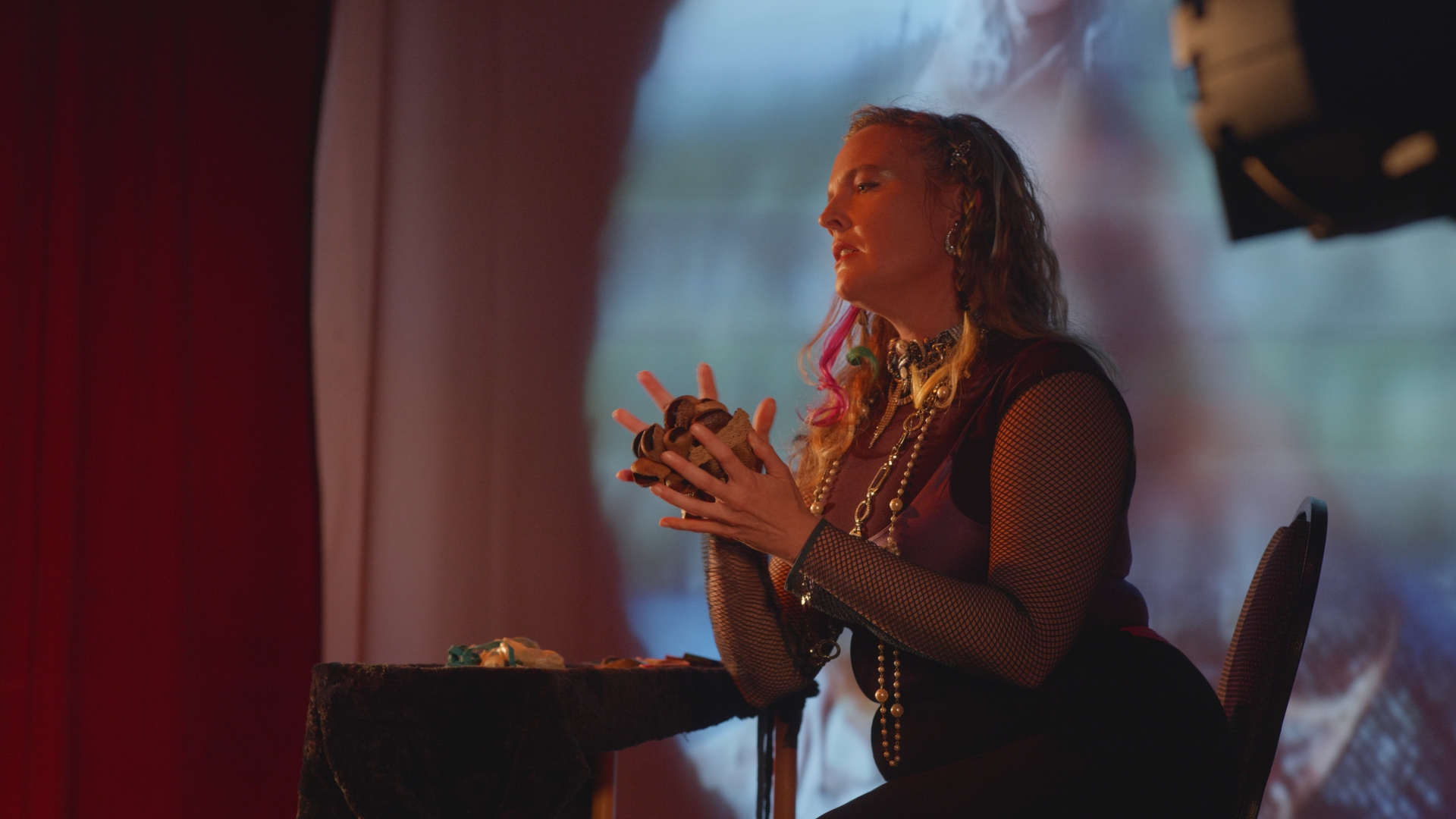
The Siren, in the second part, also assumes her femininity, not wishing to become human for the eyes of an insignificant prince, but rather because she “feels out of place” in the aquatic world. Hron’s music, neither frankly atonal nor consonant, is truculent in its use of onomatopoeia, partly improvised by the performer. I think that a clearer sonic distinction between the two tales (timbres, colors, rhythms, textures, whatever) would have been in order, to better differentiate and embody the plunge into two narrative universes well set in their decorative contrasts. The fact remains that this is a very stimulating proposal, and I’d love to hear more from this young composer.
The third offering was another 180-degree turnaround. Toronto’s Olivia Shortt, equipped with her baritone sax and effects pedals, threw her Makwa to the audience, a kind of hammered rage against a video backdrop of films of a capering cat, made-up characters, a queer couple in incongruous situations and psychedelic animations. Dali and Bunuel would have loved it. The saxophonic vociferations, reinforced by loops and ample reverb, were not as violent as the artist had implied in her “warning” to the audience. An intense performance, to be sure, but highly dynamic and narratively coherent thanks to the video’s surreal follies (which is ironic, isn’t it?). Indeed, without the video’s often playful side, the whole thing could have been boring.
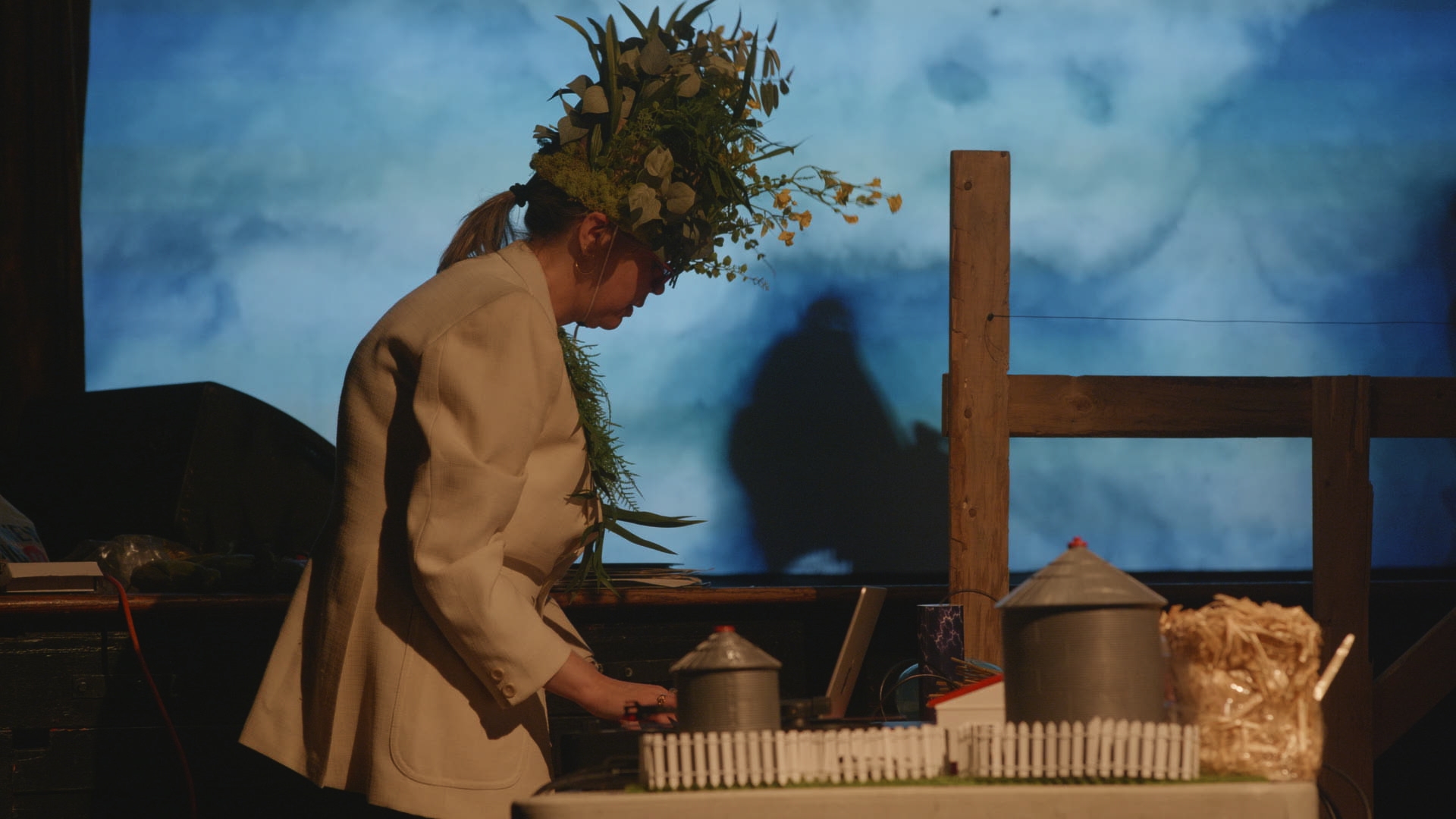
The final moment of the evening belonged to Nicole Lizée, who presented for the first time Saskbient/Manitobient (an obvious play on the words Saskatechewan, Manitoba and ambient), an expressionist painting for Amy Horvey on banjo and double-bell trumpet (a huge repertoire boost for this instrument in a single evening!), with Lizée’s acoustic-digital tweaking, set against a video evoking the two Prairie provinces through all manner of objects and staging. Amy Horvey pinching a barbed-wire fence in the video responded to the same live artist playing her banjo. Lizée sliding a toy skate across a vinyl, DJ-style, echoed her live double manipulating her sequencer. Wearing hats resembling sheaves of wheat, the two performers played in front of a jumble reminiscent of certain symbolic icons of the central provinces: a wooden fence, a stuffed cow, a small farm, corncobs whose peeling also served as rhythmic accompaniment, like percussion, and even little balloons in the shape of aliens, the kind with big heads and big black eyes you might see on T-shirts bearing the words “I Live in Area 51, But Don’t Tell Anyone”. I didn’t quite understand that one. Are there more ETs in Saskatchewan and Manitoba? It has to be said that Lizée has a passion for science fiction. But it doesn’t matter, because the musical proposition, without being the Montreal creator’s best, is quite amusing.
That said, while Saskbient/Manitobient was the evening’s headliner, I came away very impressed by Hron’s Out Loud, shaken and stirred by Shortt’s Makwa, and absolutely seduced by Devaux’s SADA.
